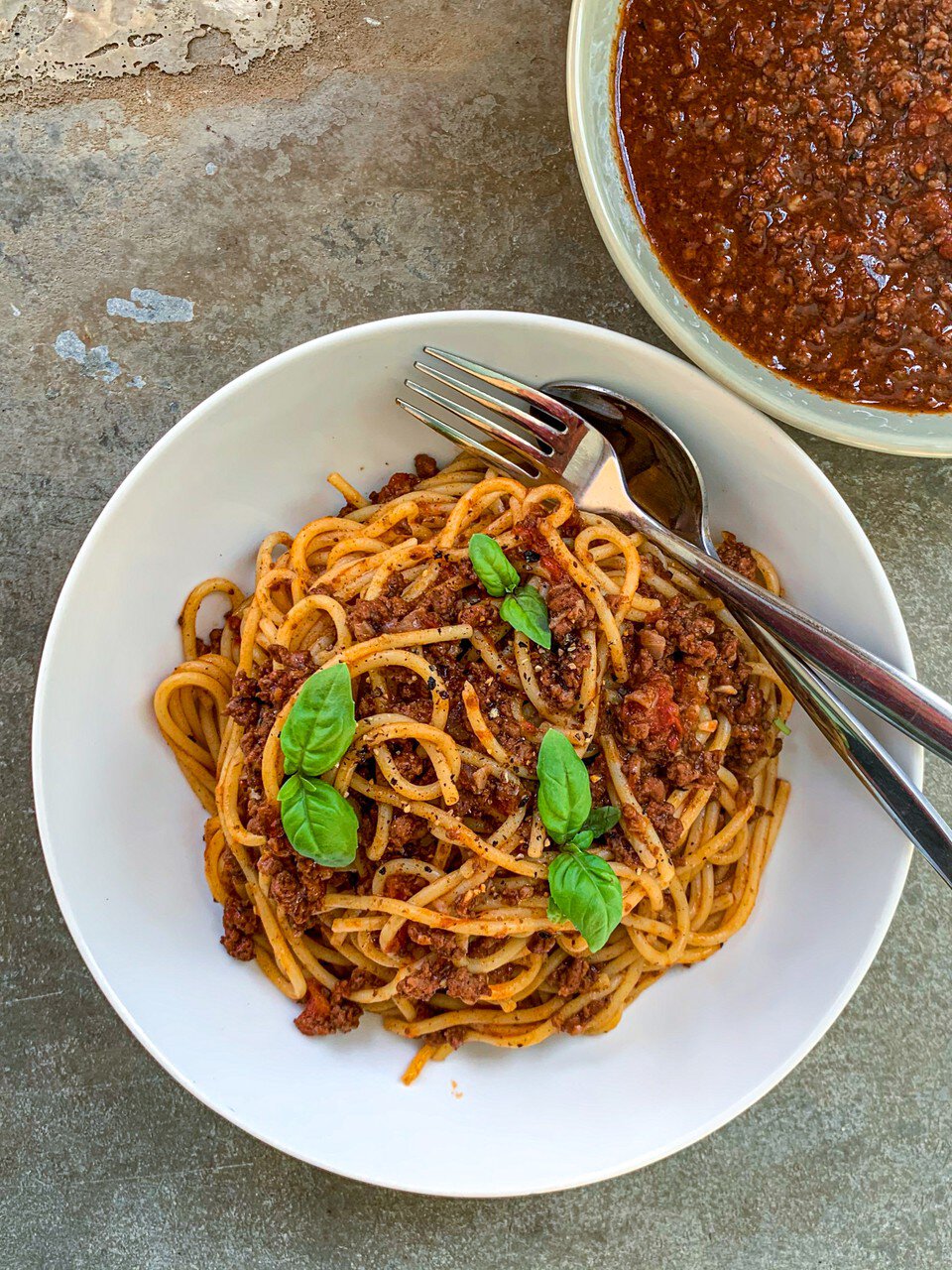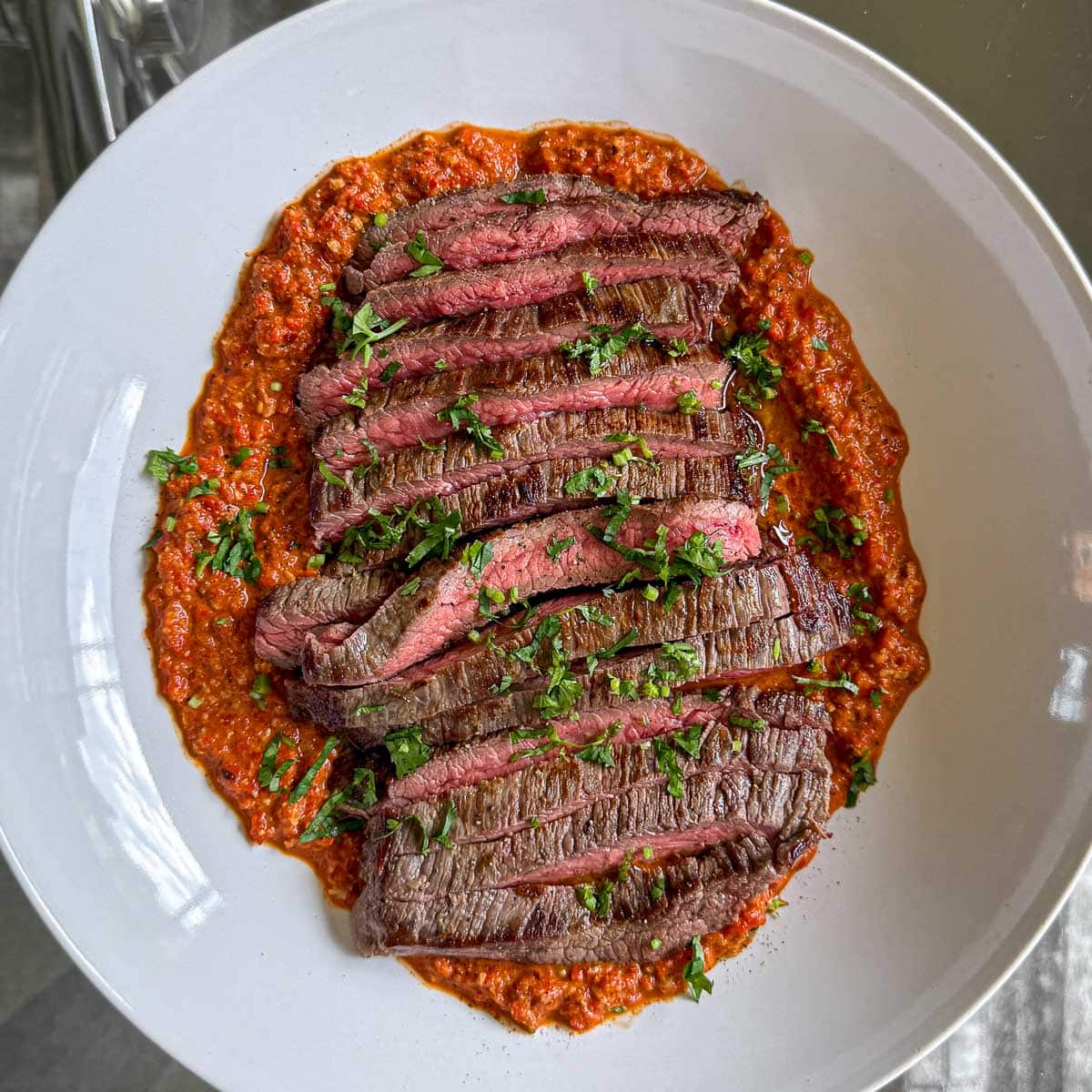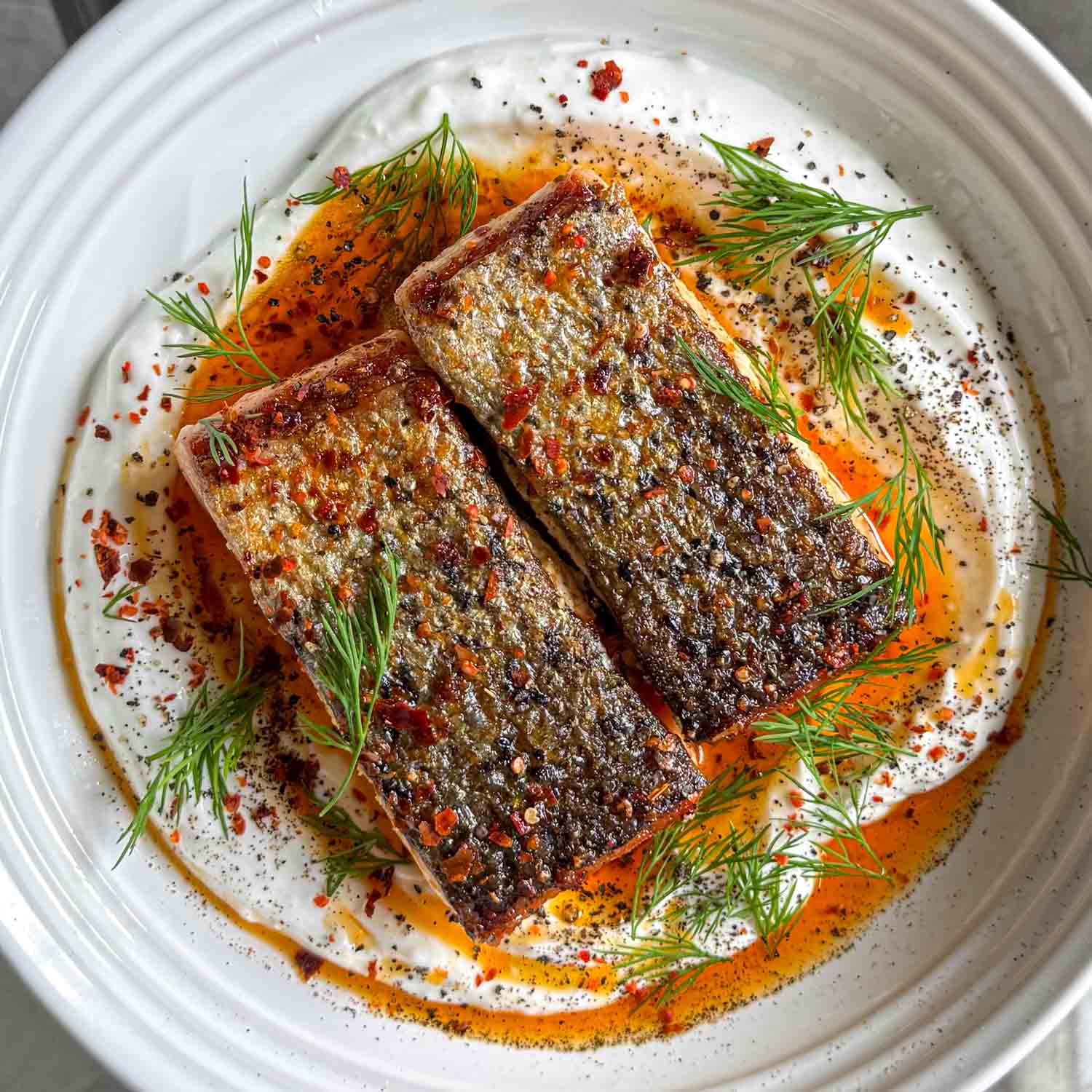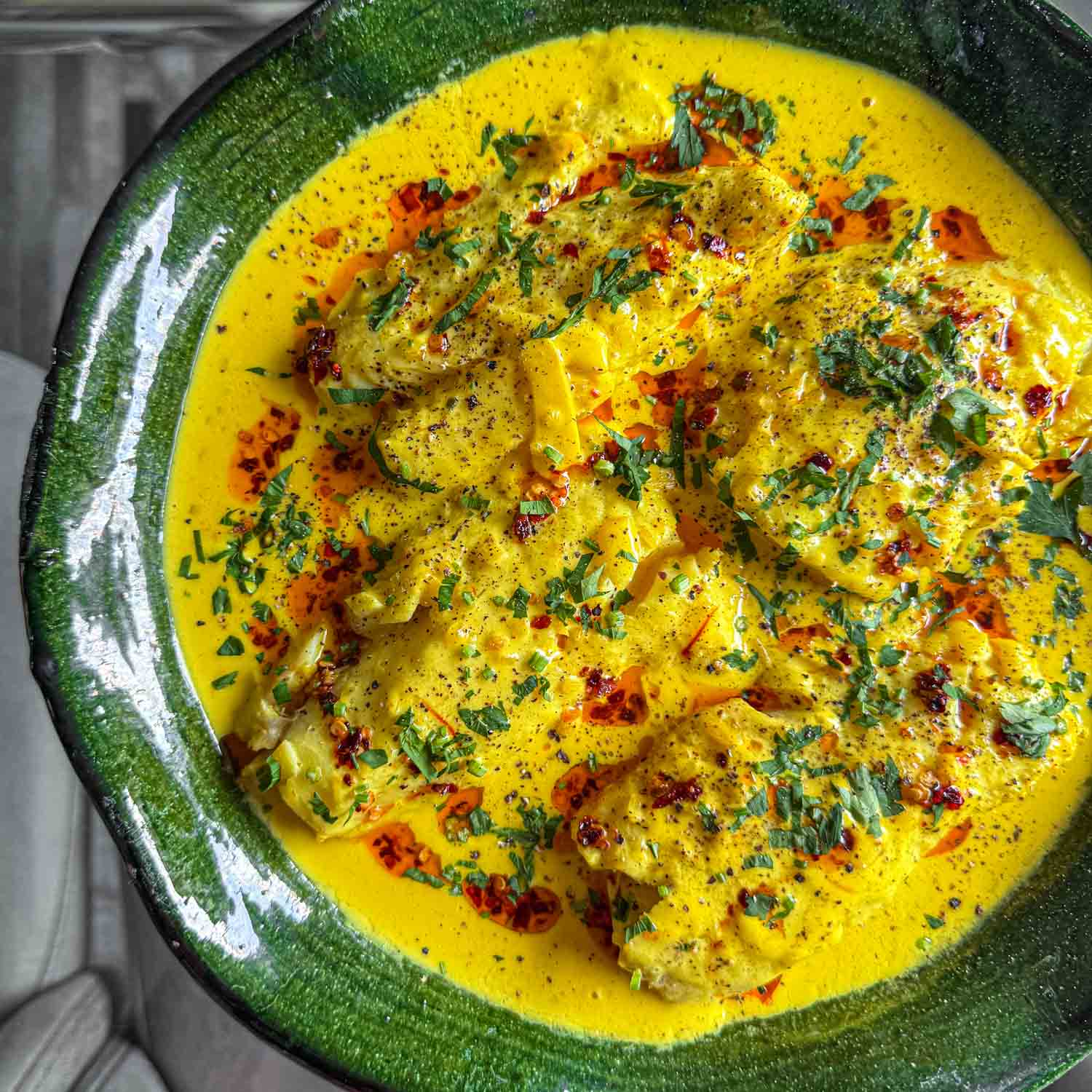Greek-Style Bolognese (Kima), is a comforting dish that brings together the rich, meaty flavours of traditional bolognese with the warm, aromatic spices typical of Greek cuisine. Unlike the Italian classic, which relies heavily on tomatoes and herbs, this version uses a unique blend of spices, such as cinnamon and allspice, to create a truly distinctive dish. The use of olive oil and fresh herbs ties the sauce to Greek culinary traditions, while the ground beef (or lamb) gives it a rich, hearty texture. Whether served over pasta, rice, or in a pita, Greek-Style Bolognese (Kima) is versatile, satisfying, and packed with flavour. This recipe is perfect for a weeknight dinner or as a dish to impress guests with something a little different from the usual.
Table of Contents
- The Greek Influence
- Choosing the Right Meat
- Low and Slow
- Serving Greek-Style Bolognese (Kima)
- Tips for the Perfect Greek-Style Bolognese (Kima)
- More Recipes Like This
Ingredient Breakdown
- Ground Beef or Lamb: The foundation of the dish, these meats provide a rich, savoury base for the sauce.
- Olive Oil: Adds richness and helps cook the onions and garlic, infusing the dish with a Mediterranean flavour.
- Yellow Onion: A key aromatic, onions give depth to the sauce and balance the spices.
- Garlic: Provides a robust flavour that complements the richness of the meat and the warmth of the spices.
- Cinnamon Stick: A distinctive Greek flavour, cinnamon adds a sweet, fragrant warmth to the sauce.
- Allspice: Adds a subtle complexity, enhancing the overall depth of the dish.
- Tomato Paste: Concentrates the tomato flavour, helping to thicken the sauce and add richness.
- Diced Tomatoes: Provide a slight tanginess and balance the spices.
- Red Wine: Adds depth and acidity to cut through the richness of the meat and create a rounded sauce.
- Bay Leaves: Infuse the sauce with a mild, herbal flavour, perfect for slow cooking.
- Oregano: A classic Mediterranean herb that brightens the dish with its fresh, earthy flavour.
- Salt and Pepper: Essential for seasoning and balancing the flavours.
- Coriander or Parsley (optional): Fresh herbs used as a garnish, adding a fresh contrast to the rich sauce.
The Greek Influence
What sets Greek-Style Bolognese (Kima) apart from its Italian cousin is the infusion of warm spices and the Mediterranean touch. Traditional bolognese sauces often rely on basil, oregano, and thyme for their flavour profile, but Greek cuisine adds an entirely different twist. The use of cinnamon, allspice, and bay leaves gives this dish a unique fragrance that is distinctly Greek. These spices, although unexpected in a bolognese, elevate the dish, bringing a sense of warmth and complexity.
The addition of red wine and tomato paste also plays a significant role in the development of flavour. Red wine contributes acidity, which balances the richness of the meat. Meanwhile the tomato paste enhances the depth of the sauce, providing a concentrated burst of flavour. This combination of ingredients ensures that the Greek-Style Bolognese (Kima) has an unexpected but comforting sweetness and complexity.
Choosing the Right Meat
When preparing Greek-Style Bolognese (Kima), the choice of meat plays a crucial role in achieving the desired richness and flavour. While ground beef is the most common choice, Greek recipes often use lamb, which adds a distinctive taste and pairs beautifully with the aromatic spices.
If you prefer ground beef, aim for a blend with a moderate fat content (around 15% fat), as this will provide the necessary moisture and flavour without being too greasy. Alternatively, lamb lends a unique, slightly gamey flavour that complements the cinnamon, allspice, and oregano.
Some variations of Kima may even use a mixture of beef and lamb to strike a balance between the two. Whichever you choose, ensure that the meat is fresh and of good quality. Buying freshly ground meat from a local butcher ensures a better texture and flavour, as it will have a more tender and juicier consistency than pre-packaged options.
Low and Slow
One of the secrets to the best Greek-Style Bolognese (Kima) is the slow cooking process. While the recipe is relatively simple, taking the time to let the flavours develop makes all the difference. After browning the meat and adding the tomato paste, the sauce should simmer gently, allowing the spices to infuse and the wine to reduce, creating a rich, thick sauce.
The key here is patience. As the sauce simmers, the flavours meld together, with the wine reducing and the tomatoes breaking down to add depth and a velvety texture. The result is a luxurious sauce that clings to the meat and pasta, offering a mouthful of complex flavours with every bite. This slow cooking technique is what sets Kima apart from many other sauces. It’s what transforms a basic dish into a truly satisfying meal. Don’t rush this stage. Let the sauce develop at its own pace to maximise the flavour potential.
Serving Greek-Style Bolognese (Kima)
Greek-Style Bolognese (Kima) is incredibly versatile and can be served in various ways. Traditionally, it’s served over pasta, but it’s equally delicious when paired with rice, or even in a pita for a more casual meal. The richness of the meat sauce pairs beautifully with the starchy base, soaking into the pasta or rice and creating a comforting, hearty dish.
If you want to get creative, try serving the Kima with a dollop of Greek yogurt for a cool, creamy contrast. A sprinkle of fresh herbs, such as parsley or coriander, adds a pop of colour and freshness that cuts through the richness of the sauce.
For a more traditional touch, serve it with a side of Greek salad. The crispness of the vegetables and the tangy feta cheese will complement the warm, spiced flavours of the bolognese perfectly. Whether you opt for a classic pasta or get creative with your serving style, Greek-Style Bolognese is sure to impress.
Tips for the Perfect Greek-Style Bolognese (Kima)
To ensure your Greek-Style Bolognese (Kima) turns out perfectly, here are a few tips to keep in mind:
- Use quality meat: For the best flavour, opt for fresh ground beef or lamb. If you can, buy your meat from a butcher who can grind it fresh. Freshly ground meat will provide a better texture and deeper flavour.
- Let the sauce simmer: Don’t rush the cooking process. Allowing the sauce to simmer for a longer period helps the flavours develop and deepen. Aim for at least 30 minutes of cooking, but longer is even better.
- Taste and adjust: Before serving, taste your sauce and adjust the seasoning if needed. You may want to add more salt, pepper, or a pinch of sugar to balance out the acidity of the tomatoes.
- Use fresh herbs for garnish: While the dish itself is rich with spices, adding fresh herbs like parsley or coriander just before serving brightens the flavour and adds a fresh contrast.
- Make it ahead: Like many sauces, Greek-Style Bolognese tastes even better the next day. Make it in advance and let the flavours sit overnight in the fridge. Just reheat before serving!
More Recipes Like This
If you’re looking for some recipes like this Greek-Style Bolognese (Kima), here are some of my go-tos:
- Vegan Bolognese (Ragu): A delicious, rich plant-based ragu with mushrooms and Puy lentils.
- Harissa Lamb Ragu: With smoky harissa, warm spices, and a splash of red wine, This ragu is all about layering flavours to create a pasta sauce that’s both hearty and deeply satisfying.
- Sausage Ragu: A delicious, rich meat sauce using good-quality pork sausage with layers upon layers of flavour.
- Slow Cooked Brisket Ragu: Rich and indulgent featuring beef brisket, slow-cooked until it’s falling apart. It’s a real winner.
See how I make all these recipes and more over on my Instagram!
Greek-Style Bolognese (Kima)
5 Stars 4 Stars 3 Stars 2 Stars 1 Star
No reviews
A delicious, rich meat sauce with layers upon layers of flavour. What distinguishes kima from a traditional ragù Bolognese are the spices: this recipe calls for a combination of cinnamon, allspice and clove, which adds warmth and a slight sweetness to the dish. I love a good Bolognese, but I love this even more; once you try it, you will too! Serve it with pasta or use it as a base for moussaka or pastitsio.
- Prep Time: 5 minutes
- Total Time: 1 hour 30 minutes
- Yield: 4 1x
- Category: Pasta, Meat
Ingredients
- 1 tbsp extra-virgin olive oil
- 500 g beef mince
- sea salt and freshly-ground black pepper
- 1 sweet onion (or red onion), finely chopped
- 2 large garlic cloves, finely chopped
- ½ tsp ground cinnamon
- ½ tsp ground allspice
- ¼ tsp ground clove
- 30 g double concentrated tomato purée
- 100 ml sweet red wine
- 1 x 400g tin of good-quality whole peeled plum tomatoes, hand-crushed
- 250 ml good-quality beef or chicken stock
- 1 dried bay leaf
- ½ tsp sugar
- cooked spaghetti and lots of grated Gruyère cheese, to serve
Instructions
- Heat the extra-virgin olive oil in a large Dutch oven over medium-high heat. Add the beef mince and cook until browned, 3 to 4 minutes, breaking it up with a wooden spoon or potato masher (it works surprisingly well!). Once browned, season with a generous pinch of salt and some freshly-ground black pepper.
- Turn the heat down to medium. Add the onion and cook, stirring occasionally, until softened, 4 to 5 minutes. Add the garlic and the spices (cinnamon, allspice and clove) and cook for 1 minute, stirring constantly.
- Add the tomato purée and cook, stirring frequently, until it begins to darken, 2 to 3 minutes. Add the red wine and cook, stirring occasionally, until it is evaporated and the surface of the pot is almost dry.
- Add the crushed tinned tomatoes, stock, dried bay leaf and sugar. Stir to combine and bring the sauce to a simmer. Reduce the heat to low and simmer with the lid slightly ajar until the meat is very tender and the sauce has thickened, 1 to 1 ½ hours; stir occasionally.
- Taste and season with sea salt and freshly-ground black pepper. To serve (Greek-style), divide cooked spaghetti between bowls and top with the sauce and some grated gruyère cheese – enjoy!
Notes
Love bolognese? Try some of my other bolognese recipes: Ragu Bolognese, Brisket Ragu, Spiced Short Rib Ragu or Duck Ragu.









